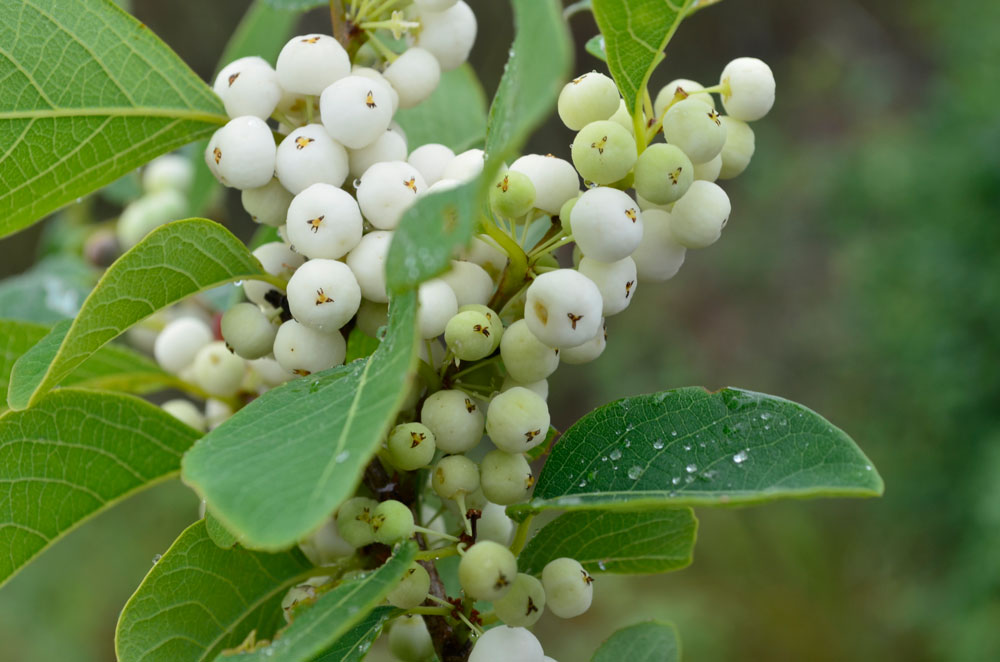Ingredients
Gubinge, Kakadu Plum, Australian Bush Plum
Gubinge, Kakadu Plum, Australian Bush Plum, Gubinge, the Australian bush plum (“Kakadu Plum”) grows in Western Australia and the Northern Territory, and is considered to be the world’s richest source of natural vitamin C. The fresh fruit contains over 3% vitamin C by weight – 50 times the concentration found in oranges – and the dried fruit powder can contain over 15% by weight of vitamin C. The vast majority of vitamin C contained in readily available supplements is synthetic.
There is no plant in the world that has the same level of vitamin C, anti-oxidants and bio actives, none of which are lost through state-of-the-art processing methods.
As well as being an excellent source of natural vitamin C, the Gubinge has also been shown to have significant antioxidant properties. It is also an excellent source of dietary fibre (around 47% by weight in the powder) and is relatively low in sugar, but containing 5 times more glucose than fructose.
For centuries the Gubinge has been used as a food source by the Australian Aborigines. Companies around Australia are working together with Australian Indigenous communities in Western Australia and the Northern Territory to put in place the infrastructure necessary to harvest and supply commercial quantities of Gubinge. This has already lead directly to tangible benefits for these communities and is providing them with an opportunity to develop and manage their own bush Gubinge industry.
The Gubinge contains phytochemicals such as gallic and ellagic acids. Gallic acid has antibacterial, antiviral and antifungal activities and also shows anti-inflammatory, anti-tumour, anti-mutagenic and anti-bronchodilatory activities. Ellagic acid has anticarcinogenic effects against a wide range of carcinogens in many human tissues.


White Currant, Euphorbiaceae
A small spreading shrub to 3m high, occurring in savannahs across northern Australia. The fruit are very sweet and tasty if collected when fully ripe. If they are eaten prior to, or just after peak ripeness, they have an unpleasant aftertaste.
The small white fruit are often produced in large quantities in the early to mid wet season from November to March.
A leaf and water infusion may be drunk or applied externally to treat stomach pain, vomiting, itchiness, rashes and skin disease. This plant is also used extensively to make fire sticks. For some Aboriginal groups, it is a calendar plant, and the production of fruit signals the beginning of the build-up weather dry, pre-monsoon period.
Then there’s the white currant tree (Fluegga virosa), which bears fleshy sweet fruits. An infusion of the tree’s leaves can be drunk or applied externally to treat stomach pain, vomiting, itchiness, and skin diseases, while the stems can be used to make children’s spears and fire sticks.
Boab
The Boab tree is a true Kimberley icon with its striking and unusual shapes. They can live to 1,500 years and are a source of life saving water in the dry times with its distinctive swollen trunk. The boab was registered in 2008 as one of the king fruits of the world. Its leaves are edible and delicious in salads. The roots are also edible with a taste similar to water chestnuts and are very nutritious. The edible pulp found in the nut is high in vitamins C and B and calcium. It was used by Aboriginal women for morning sickness. The seeds can be eaten raw or roasted and the bark was used to treat fevers.
Boabs feature in rock art and some have been used as prisons. Dreamtime stories tell of a proud and arrogant tree that was punished by being replanted upside down with its roots in the air.


Rosella
A bush tucker that was introduced into Australia thousands of years ago by Indonesionian fishermen that can be found between Broome and Queensland. The rosella bush produces red edible calyxes that are high in vitamin C. They have a pleasant tart sweet flavour widely used in salads, jellies, sauces, jams and cordials. Aboriginals used the bush as flavour when cooking kangaroo and also roasted and ground the seeds into flour.
Chinese scientists recently discovered the stem has properties that can cure stomach ulcers, with ongoing research into its effects on stomach cancer.
